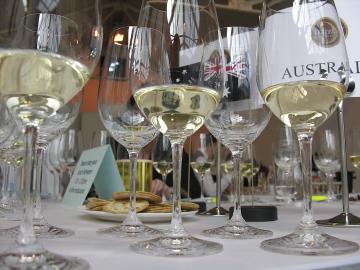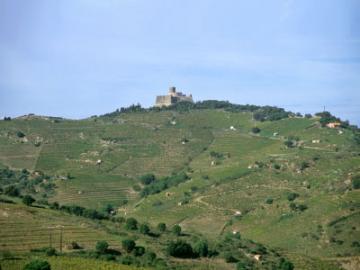Lady Gaga and Tiny Mechanical Feet
POSTED ON 14/06/2009There’s a nice story at Bloomberg by the American wine journalist Elin McCoy (author of the excellent book about Robert Parker: The Emperor of Wine) about the 2007 vintage Ports. According to her and many of those who’ve tasted them, 2007 looks to be a great year for vintage port, which was unanimously declared a vintage year by Portugal’s port houses in April. Port is one of those curious anomalies in which, like champagne, it’s the producer who declares whether the year is a vintage year or not.
South-West France: Ancient and Modern - Part 1
POSTED ON 08/06/2009The South West stretches from the Atlantic to the vibrant city of Toulouse – the capital of the region – and from the sunny foothills of the Pyrenees to the majesty of the Massif Central. In between, there are vineyards on the plains of the Béarn, along the river valleys of the Garonne, Lot and Tarn and on the rolling hills of Gaillac. The South-West has a unique storehouse of indigenous grape varieties and a broad spectrum of wine styles to go with them. Red grapes of character include tannat, malbec, négrette and fer servadou, the latter also known as pinenc and braucol.
Cork sniffing and Sangiovese
POSTED ON 31/05/2009Last week I spent mostly sniffing corks. Well, two actually. They were from Isole e Olena’s 2001 Cepparello and Costanti’s 2001 Brunello di Montalcino, both 100% sangiovese reds I’d bought and already enjoyed, so the anticipation was eager. There was no notable difference in the smell of the corks, but according to those who make a living out of serving wine, pulling the cork and sniffing it to make sure the wine isn’t corked, there should have been. Why? Because the Cepparello was horribly corked, while the Brunello was absolutely fine, better than fine in fact.
Variety is the spice of Australian life
POSTED ON 24/05/2009A recent survey conducted by research group Wine Intelligence shows that wine drinkers haven’t much of a clue about New World wine regions. As against 94% awareness of Bordeaux in the UK and 80% in the US, followed by Champagne (93% UK; 75% US), only 10% of US respondents had heard of the Barossa Valley, and 12% of Marlborough in the survey, which polled 2,000 regular wine drinkers in the US and a 1,000 in the UK.
Fun of the London Wine Fair
POSTED ON 17/05/2009Another year, another London Wine Trade Fair done and dusted. I don’t always look forward to the LWTF with the greatest anticipation. Excel in Docklands is not the most soulful venue on earth after all, although standing outside on the river on a sunny day can be pleasantly diverting.
A Nasty Smell
POSTED ON 10/05/2009Much time, money and energy has gone into the investigation of the rubbery taint that some South African wines exhibit. The late David Wolfe, wine writer, used to call it ‘the taste of apartheid’ while the Masters of Wine who visited South Africa likened it to a ‘rusty nails’ smell.
Kenji Ichishima at Sake No Hana
POSTED ON 04/05/2009The highlight of last week was the sake dinner put on at Sake No Hana in conjunction with Decanter Magazine. It was their first ever sake dinner and while we were nervous about getting enough bums on seats, we ended up with nearly 70, which was just about the perfect number.
Jurisprudence
POSTED ON 26/04/2009Mostly last week I have been judging wine. I was judging wine for the entire week in fact as one of the co-chairs, with Huon Hooke, wine correspondent of the Sydney Morning Herald, of Australian wine at the Decanter World Wine Awards. Other journalistic friends and colleagues meanwhile were doing exactly the same thing across the capital at the International Wine Challenge, the UK’s other meaningful wine competition.
 Aussie whites line up
Aussie whites line up
The Grape Mistake
POSTED ON 19/04/2009Oops, you have to feel a bit sorry for the poor Aussie winemaker who was doing very well with his dry white albariño until he found out that it wasn’t albariño after all but most likely savagnin blanc.
Albariño is the fashionable Spanish white grape variety of Rias Baixas in Galicia and when Damien Tscharke found that it might suit the Australian climate he went about sourcing some of the Spanish white grape variety in order to make a dry white wine from it.
 Rias Baixas, Galicia ©static.howstuffworks.com
Rias Baixas, Galicia ©static.howstuffworks.com
In the Zone
POSTED ON 12/04/2009With Lent done and dusted for another year, it’s no bad time to reflect on the pros and cons of giving up drinking wine. For anyone who’s used to drinking at least some wine every day, it may not be an easy task.
In my job, what is easy is to get into the habit of having a few glasses or a bottle of wine a day without a second thought. But alcohol is potentially addictive and if you don’t have a decent break from it every so often, how do you know whether you’re dependent, albeit mildly, or not, or what the effects are?

